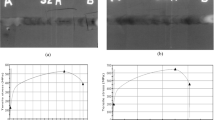Abstract
Generally, the weld quality depends on the mechanical properties like ultimate strength and yield strength. Again the weld bead geometry mainly the depth of penetration affects these mechanical properties. These weld quality parameters weld bead geometry, weld bead strength are highly controlled or influenced by the welding process parameters like welding current, welding voltage, and wire feed rate, gas flow rate, and nozzle to workpiece distance in gas metal arc welding. As the process parameters affect the different welding performance parameters in different ways, single-objective optimization technique is not efficient enough to optimize all the parameters simultaneously. In this paper, a hybrid multi-objective approach, i.e., Principal Component Analysis (PCA) with the Technique for Order of Preference by Similarity to Ideal Solution (TOPSIS) approach has been used to obtain improved welding quality in optimal welding condition for gas metal arc welding (GMAW).
Access this chapter
Tax calculation will be finalised at checkout
Purchases are for personal use only
Similar content being viewed by others
References
Srivastava S, Garg RK (2017) Process parameter optimization of gas metal arc welding on IS: 2062 mild steel using response surface methodology. J Manuf Process 25:296–305
Ghosh N, Pal PK, Nandi G (2016) Parametric optimization of MIG welding on 316L austenitic stainless steel by grey-based taguchi method. Procedia Technol 25:1038–1048
Ghosh N, Rudrapati R, Pal PK, Nandi G (2017) Parametric optimization of gas metal Arc welding process by using Taguchi method on ferritic stainless steel AISI409. Mater Today Proc 4(2):2213–2221
Qin G, Meng X, Fu B (2015) High speed tandem gas tungsten arc welding process of thin stainless steel plate. J Mater Process Technol 220:58–64
Patil SR, Waghmare CA (2013) Optimization of MIG welding parameters for improving strength of welded joints. Int J Adv Eng Res Stud 2(4):14–16
Sapakal SV, Telsang MT (2012) Parametric optimization of MIG welding using Taguchi design method. Int J Adv Eng Res Stud 1(4):28–30
Benyounis KY, Olabi AG (2008) Optimization of different welding processes using statistical and numerical approaches–a reference guide. Adv Eng Softw 39(6):483–496
Metzbower EA, DeLoach JJ, Lalam SH, Bhadeshia HKDH (2001) Neural network analysis of strength and ductility of welding alloys for high strength low alloy shipbuilding steels. Sci Technol Weld Joining 6(2):116–124
Olabi AG, Alsinani FO, Alabdulkarim AA, Ruggiero A, Tricarico L, Benyounis KY (2013) Optimizing the CO2 laser welding process for dissimilar materials. Opt Lasers Eng 51(7):832–839
Hooda A, Dhingra A, Sharma S (2012) Optimization of MIG welding process parameters to predict maximum yield strength in AISI 1040. Int J Mech Eng Robot Res 1(3)
Tong LI, Wang CH, Chen HC (2005) Optimization of multiple responses using principal component analysis and technique for order preference by similarity to ideal solution. Int J Adv Manuf Technol 27:407–414
Chakravorty R, Gauri SK, Chakraborty S (2012) Optimization of correlated responses of EDM process. Mater Manuf Process 27:337–347
Athawale VM, Chakraborty S (2010) A TOPSIS method based approach to machine tool selection. In: Proceedings of the international conference on industrial engineering and operations management, Dhaka, Bangladesh
Lan TS (2009) Taguchi optimization of multi-objective CNC machining using TOPSIS. Inf Technol J 8(6):917–922
Author information
Authors and Affiliations
Editor information
Editors and Affiliations
Rights and permissions
Copyright information
© 2020 Springer Nature Singapore Pte Ltd.
About this paper
Cite this paper
Rout, A., Mahanta, G.B., Deepak, B., Biswal, B.B. (2020). Application of PCA-TOPSIS Method for Selecting Optimal Welding Conditions in GMAW to Improve the Weld Quality. In: Deepak, B., Parhi, D., Jena, P. (eds) Innovative Product Design and Intelligent Manufacturing Systems. Lecture Notes in Mechanical Engineering. Springer, Singapore. https://doi.org/10.1007/978-981-15-2696-1_56
Download citation
DOI: https://doi.org/10.1007/978-981-15-2696-1_56
Published:
Publisher Name: Springer, Singapore
Print ISBN: 978-981-15-2695-4
Online ISBN: 978-981-15-2696-1
eBook Packages: EngineeringEngineering (R0)




